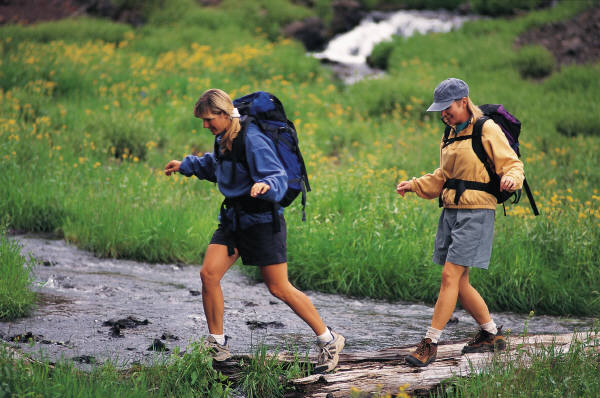We love the summer. It gives us more opportunities to get outdoors and exercise. To break from your normal summer exercise regime or to try something different, we wanted to give you some new outdoor exercise options. Here are our findings.
1.Skipping-rope. Haven't skipped rope or played a little Double Dutch with your friends since you were in grade school? Well, it's time to pick up an old habit. It's fun, trendy, and family-friendly. Get the kids involved and get everyone's fitness curve on the upswing. Women all around the country have rediscovered jump-rope, both as a means of getting in shape and as a healthy form of competition. There are exhibitions and festivals going on throughout the United States and Europe. As for weight loss, twenty minutes of jumping is the equivalent of an hour of aerobics. The best part is that skipping-rope is a great lower-body workout.
2. Geocaching. This fun, walking-intensive activity - essentially a technological scavenger hunt - is sweeping the nation. All you need to participate is a hand-held GPS device. Here's how it works: people hide objects almost anywhere you could imagine (the caches), and list them online only by their latitude and longitude. Geocachers become members of these online groups and select caches to find based on general location and difficulty of the search. Caches are inexpensive, fun and quirky. When you find a cache, you leave something else for the next person. To learn more, go to www.geocaching.com.
3. Yoga at dawn. For you early risers, join the ranks of yoga enthusiasts who
spread their mats on the beach as the sun makes its appearance for another day. Yoga has both physical and psychological benefits that often seem enhanced when combined with awe-inspiring natural events. Alternatives to practicing your asanas (yoga poses) at dawn include yoga in the moonlight and yoga in a quiet glade.
4. Fitness trails. Instead of simply biking, jogging or hiking, check out a fitness trail near you. Fitness trails are paths that have a series of stations featuring different exercises. As you jog down the trail, you periodically come upon a chinning bar, parallel bars or, perhaps, a horizontal ladder, all designed to give a different part of your body a workout. Fitness trails are often sponsored by colleges, community groups or your city government, so there's probably one nearby.
5. Amateur leagues. It may seem as if we've become a nation of couch
potatoes, getting our thrills vicariously through our local university or professional sports teams. In reality, amateur participatory sports are alive and well. If you love baseball, why not find a local league designed for people just like you? Most cities and towns have organized programs in baseball, softball, basketball and soccer that are perfect for adults and kids of all ages. It's great weather for sports, so join in, have fun and get fit.
This list should assist you with more exercise choices this summer. Thank you to netquote.com for their insight concerning this topic. If you would like to contact us with any questions or feedback, you can reach us by email.
Thank you for visiting!
Joseph A. Jones & The WellLife Team






